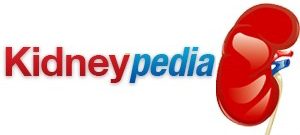The bun creatinine ratio is a comparison between the concentration of two substances in the blood: creatinine and blood urea nitrogen (or BUN). This is a diagnostic test that can tell a physician much about the health of the kidneys. Both BUN and creatinine are waste products that accumulate in the blood and are removed from the blood by the kidneys and deposited in urine to be expelled from the body.
Blood urea nitrogen is produced by the liver as part of metabolic processes, while creatinine is a by-
Normal Levels
The normal ratio of BUN to creatinine in the blood is between 10 and 20 to 1, more or less, although this “normal” range varies with age and gender. Ratios higher than 20 to 1 or lower than 10 to 1 (with the above caveat) are both indicative of certain kidney problems. High BUN levels (especially in children or when above 30 to 1) can indicate acute kidney damage, especially from prerenal causes. It can also indicate
bleeding in the upper gastro-
An elevated bun creatinine ratio may however be a sign of old age and decreased muscle mass, which lowers creatinine levels. The ratio is mainly indicative of a problem (when high) if it results from a high blood urea nitrogen level rather than decreased creatinine.
A high bun creatinine ratio can also result from dehydration, in which case the correction is usually simply to drink more water. All of which means that if this result shows up in a blood test, further diagnostic procedures or questions and elimination are needed to narrow down the cause.
One common misconception is that high bun creatinine ratio can result from a high-
Low Bun Creatinine Ratio
An abnormally low bun creatinine ratio can also indicate kidney damage, in this case from intrinsic causes. Such damage causes blood urea nitrogen to be reabsorbed by the kidney, resulting in an abnormally low ratio. Again, it’s the level of blood urea nitrogen that is of greater concern here, not the level of creatinine –
A low bun creatinine ratio may also be a sign of liver disease, as it may result from decreased production of blood urea nitrogen as a result of hepatic dysfunction.
Women And Children
Blood urea nitrogen levels rise, and creatinine levels tend to fall, with advanced age. BUN levels are also lower in healthy children than in adults, and slightly higher in men than in women. For this reason, age-
The bottom line for all of this is that the bun creatinine ratio is a very specific diagnostic test that can reveal certain things in conjunction
with tests for levels of blood urea nitrogen and for creatinine as stand-
It may help to narrow down the interpretation of other results, and so to indicate follow-
